Now, how many animal species do you know? Fifty? A hundred? Or even more? Well, according to some scientific researches, there are almost 9 million of them! It’s no wonder then we do not know all of them but still – there are creatures out there you certainly won’t believe even exist. Check out 25 of the most unreal animals on Earth. Caution: Not all of them are cute and sweet.

Scotoplanes
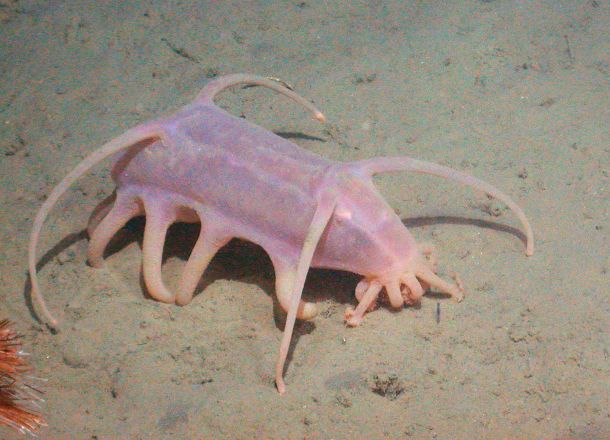 www.wired.com
www.wired.com Commonly known as sea pigs, these little deep sea animals live on ocean bottoms, typically at depths of over 0.6 miles (0.965 Kilometers). Scotoplanes are deposit feeders, and obtain food by extracting organic particles from deep-sea mud.
Goblin shark
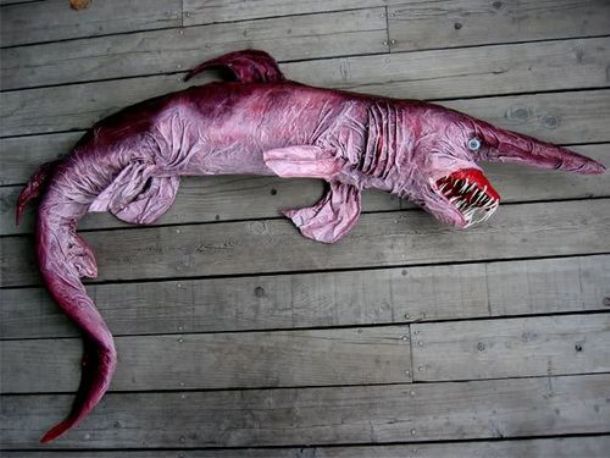 ocelebrity.com
ocelebrity.com Sometimes called a “living fossil”, the goblin shark is the only extant representative of the family Mitsukurinidae. It is usually between 10 and 13 feet (100.58m)long when mature but since it lives at depths of 330 feet and more, it does not pose any danger to humans.
Abyssinian ground hornbill
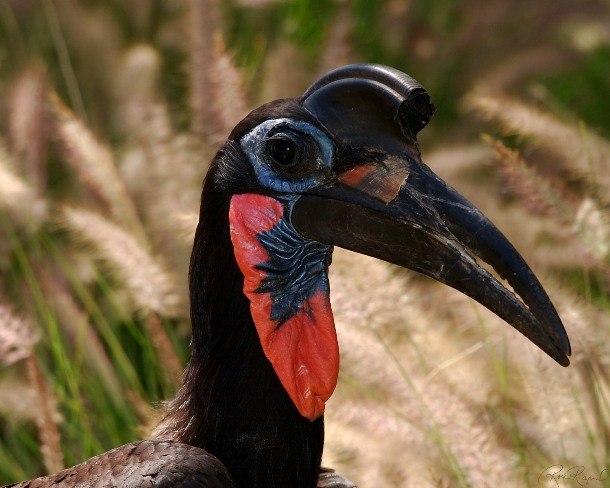 www.wild-facts.com
www.wild-facts.com Abyssinian ground hornbill (also called northern grand hornbill) is an African bird found north of the equator. The male has a red throat pouch and the female has a blue throat pouch. Modified feathers form long eyelashes, which protect their eyes from dust.
Ground pangonil
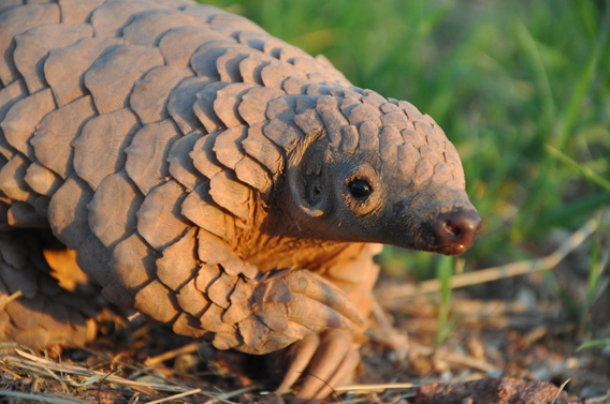 news.mongabay.com
news.mongabay.com This odd mammal, native to Africa, is covered with extremely hard scales. When threatened, it will usually roll up into a ball thus protecting its vulnerable belly. Capable of walking on two legs, the ground pangolin walks on its hindlegs when searching for food while using its forelegs and tail for balance.
Striated frogfish
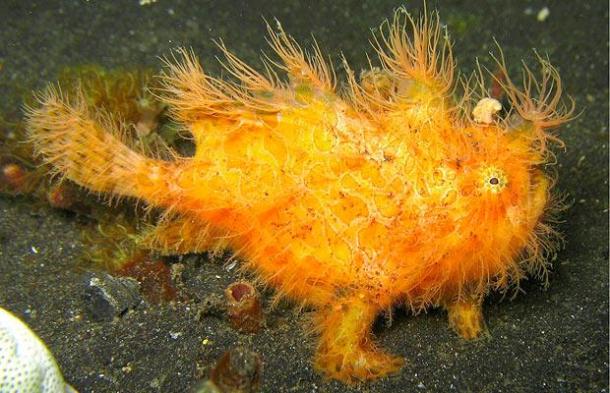 cjcharleslife.tumblr.com
cjcharleslife.tumblr.com This small fish, just about 8 – 9 inches (20.32 to 22.86 Centimeters) long, has the capacity to change coloration and pigment pattern. The first dorsal spine of the frogfish tips forward and is used as fishing rod. Its tip has a characteristic worm-like lure which, when waved, attracts unsuspecting prey.
Irrawaddy dolphin
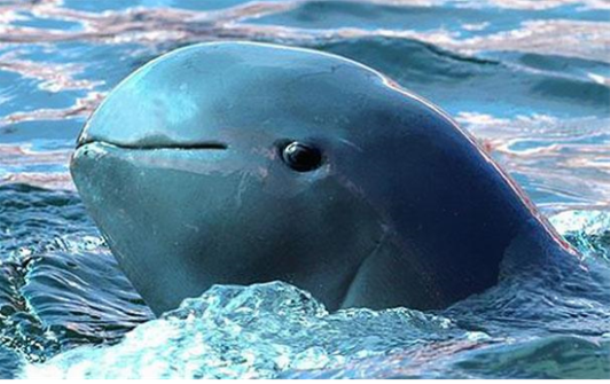 www.slicktiger.co.za
www.slicktiger.co.za The Irrawaddy dolphin is a euryhaline species of oceanic dolphin found in discontinuous subpopulations near sea coasts and in estuaries and rivers in parts of the Bay of Bengal and Southeast Asia. An Adult can exceed 290 pounds (131kg) and can reach lengths of up to 7.5 feet (2.2860 M).
Red-lipped batfish
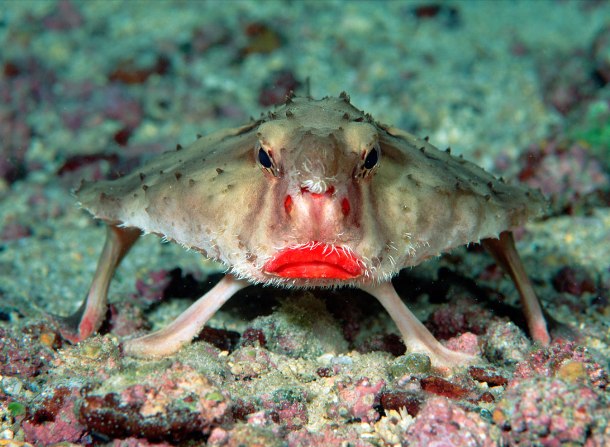 factspod.blogspot.com
factspod.blogspot.com This unreal-looking little fish species can be found around the Galapagos Islands at depths of 100 feet (30.480M) or more. Batfish are not good swimmers; they use their highly-adapted pectoral fins to “walk” on the ocean floor. It eats shrimps, small fish, crabs, etc.
Mantis shrimp
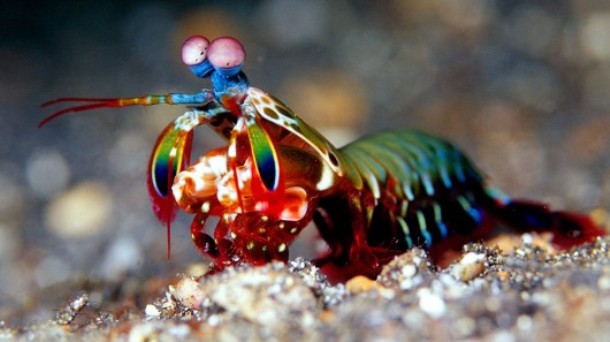 www.gizmag.com
www.gizmag.com These marine crustaceans are members of the order Stomatopoda. Mantis shrimps have powerful claws that they use to attack and kill prey by spearing, stunning, or dismemberment. When kept in captivity, some larger species are capable of breaking through aquarium glass with a single strike.
Pink fairy armadillo
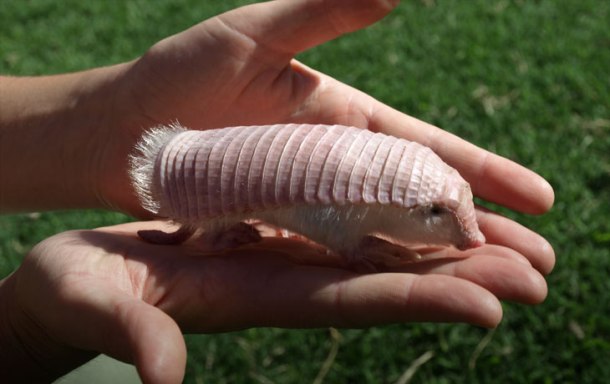 www.sciencenews.org
www.sciencenews.org This funny creature also known as pichiciego is the smallest species of armadillo – mammals of the family Dasypodidae, mostly known for having a bony armor shell. Endemic to central Argentina, these armadillos primarily feed on ants and larvae.
Lion's mane jellyfish
 www.discovery.com
www.discovery.com Also known as hair jelly, officially Cyanea capillata, it is the biggest known species of jellyfish in the world. The largest recorded specimen washed up on the shore of Massachusetts Bay in 1870 and had a bell with a diameter of 7 feet 6 inches (2.3165m) and tentacles 120 feet (36.576m) long.
Boxer crab
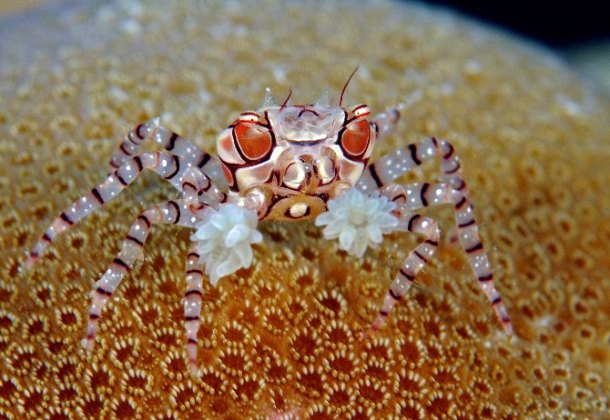 www.daveharasti.com
www.daveharasti.com These little crabs from the family Xanthidae are notable for their mutualism with sea anemones, which they hold in their claws for defense. In return, the anemones get carried around which enables them to capture more food particles.
Cantor's giant soft-shell turtle
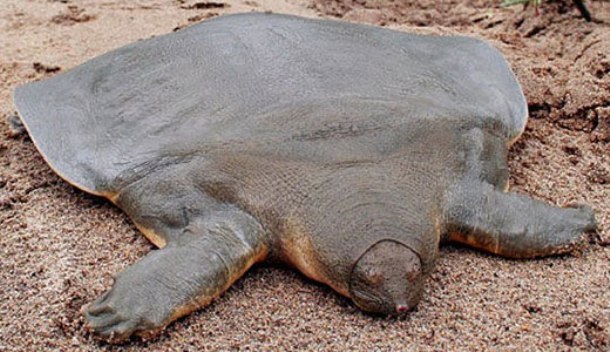 www.itsnature.org
www.itsnature.org This freshwater turtle can be easily identified by its smooth, olive-colored carapace. With up to 6 feet in length, the turtle spends 95% of its life buried and motionless with only its eyes and mouth protruding from the sand.
Blue dragon
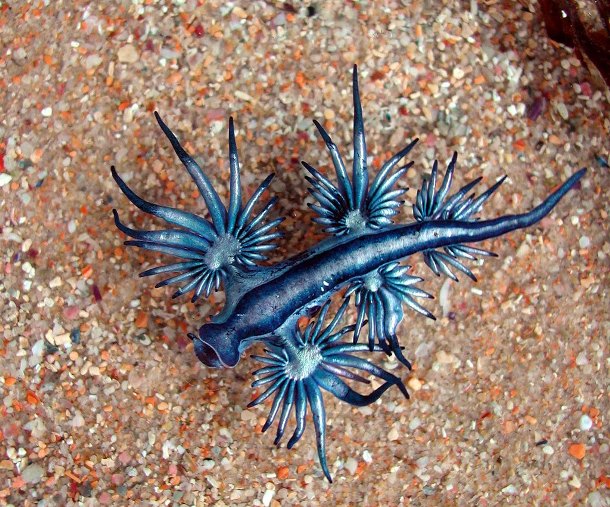 masspictures.net
masspictures.net Commonly known as the sea swallow, blue dragon or blue angel; the Glaucus atlanticus, is actually a type of small-sized blue sea slug. These slugs feed on other pelagic creatures and reach lengths of up to 1.2 inches (3.048 centimeters).
Dugong
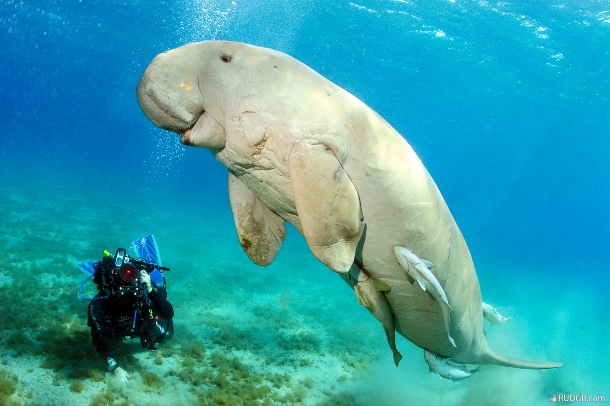 www.walpapershddownload.com
www.walpapershddownload.com This large marine mammal is one of four living species of the order Sirenia and is the only strictly marine herbivorous mammal (manatees use fresh water to some degree). Sadly, due to extensive hunting for their meat and oils, the Dugong is close to extinction.
Venezuelan poodle moth
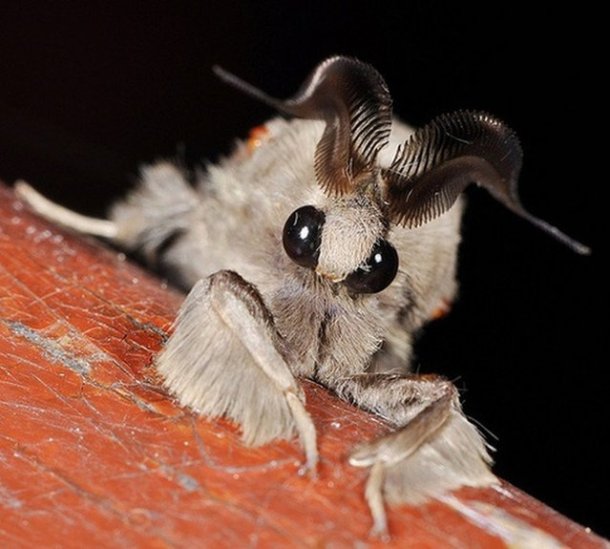 avaxnews.net
avaxnews.net This unreal looking moth species was identified in 2009 by Dr. Arthur Anker of Bishkek, Kyrgyzstan, in the Gran Sabana region of Venezuela.
Naked mole rat
 www.dailymail.co.uk
www.dailymail.co.uk The naked mole rat also known as the sand puppy, is a burrowing rodent native to parts of East Africa. Their large, protruding teeth and sealed lips are used to dig while preventing soil from filling their mouths.
Panda ant
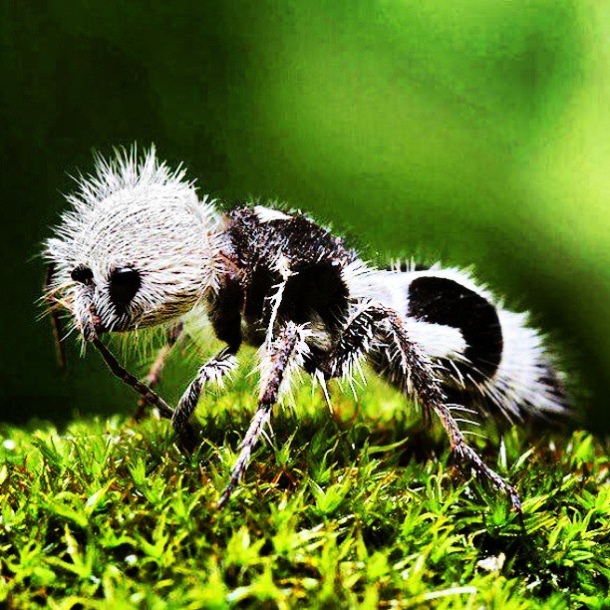 www.pakistantribe.com
www.pakistantribe.com Panda ants are not ants but wasps in the hymenopteran family Multillidae. These insects have a lovely appearance but have a nasty sting that is excruciatingly painful. This is why they are also called “cow-killers,” since they are capable of knocking out animals much larger than they are.
Aye – aye
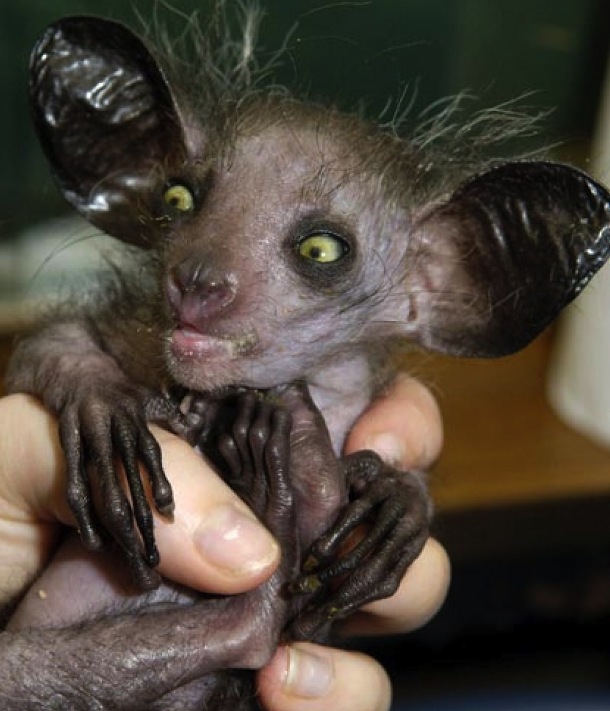 mereinkling.wordpress.com
mereinkling.wordpress.com Apart from its frightening appearance, the Aye – aye is famous for its unusual method of finding food. It taps on trees to find grubs, gnaws holes in the wood using its forward slanting incisors and then it inserts its narrow middle finger to pull the grubs out.
Tufted deer
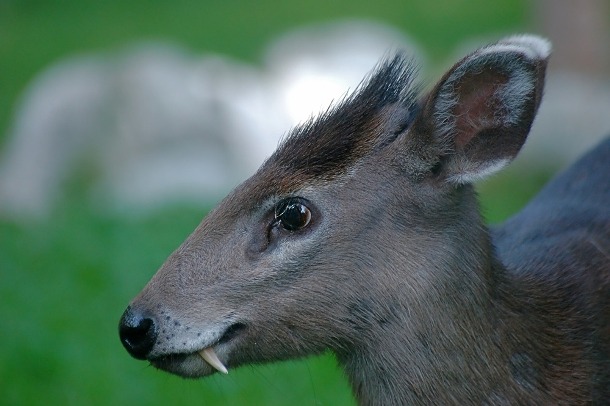 www.thefeaturedcreature.com
www.thefeaturedcreature.com Tufted deer, officially Elaphodus cephalophus, is a small species of deer characterized by a prominent tuft of black hair on its forehead and fang-like canines for the males.
Wolf fish
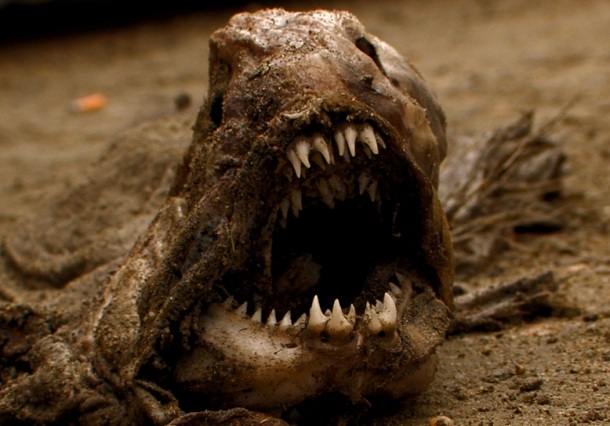 www.itsnature.org
www.itsnature.org This ferocious-looking fish can reach lengths of up to 39 inches (99.06 centimeters) and weigh as much as 90 pounds (40Kg). Found in the tropical climate of Suriname, it comes out at night to feed on other fish and small invertebrates.
Star-nosed mole
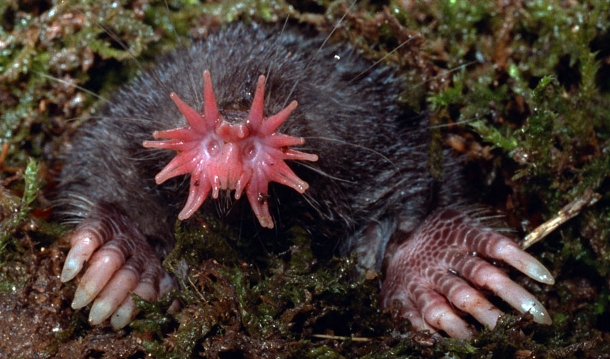 bioweb.uwlax.edu
bioweb.uwlax.edu Condylura cristata also known as star-nosed mole is a small mole found in wet low areas of eastern Canada and the northeastern United States. This little creature is easily identified by the 11 pairs of pink fleshy appendages ringing its snout.
Thorny dragon
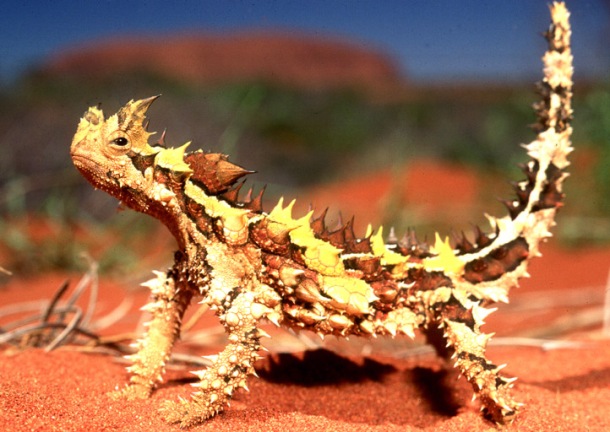 www.wild-facts.com
www.wild-facts.com The thorny dragon or thorny devil (official name Moloch horridus) is an Australian lizard that grows up to 8 inches (20.32 centimeters) and live for up to 20 years. The thorny dragon is covered in hard, sharp spines that protects them from predators. They also use their distinct coloration for camouflage.
Tube-nosed fruit bat
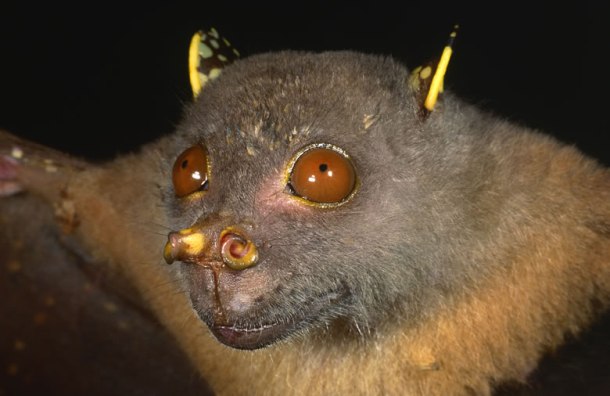 frimminjimbits.blogspot.com
frimminjimbits.blogspot.com The tube-nosed fruit bat Nyctimene was recently uncovered in the Muller Range mountains, Papua New Guinea. The furry creature gets its name from its distinctive mustard-yellow nose with tubular nostrils.
Blobfish
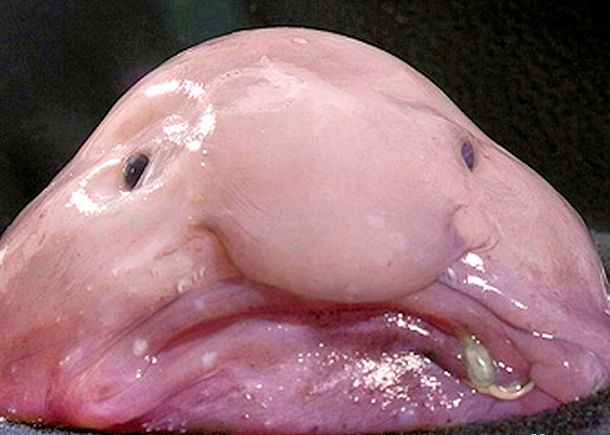 www.aquaportail.com
www.aquaportail.com The flesh of the blobfish is a gelatinous mass with a density slightly less than water. This allows the fish to float above the sea floor without expending energy on swimming.
Yetti crab
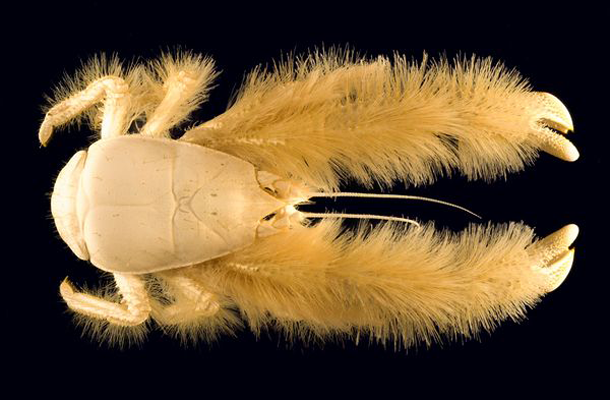 nationalgeographic.com
nationalgeographic.com The official name of this strange crustacean is Kiwa hirsuta. This decapod, which is approximately 6 inches long (15.24 centimeters), is notable for the quantity of silky blond hair covering its pereiopods.
These unreal animals are too freaky to handle…waaaay too freaky. But if you want more, you may enjoy these 25 Most Bizarre Animals Ever



























